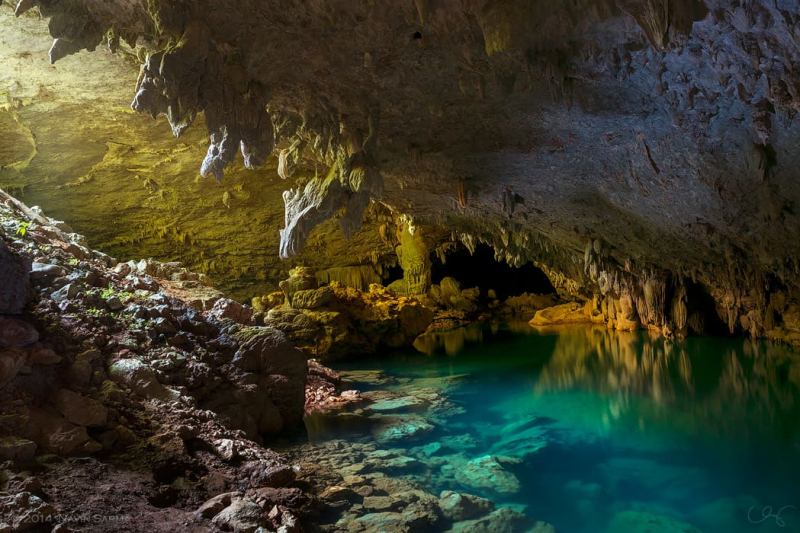It has the most caves in Central America

Belize has the highest concentration of caves in Central America, so there is a cave experience for everyone. The Rio Frio cave in the Mountain Pine Ridge Forest Reserve has a yawning 65-foot (20-meter) entrance and is small enough that you won't lose daylight, whereas the vast Actun Tunichil Muknal (or ATM) cave provides a more thrilling adventure. You'll have to swim, scramble, and wade through water for parts of the journey, but it'll be well worth it. The ancient Maya considered caves to be portals to the underworld, and you'll find ritual relics and even skeletons fused into the rocks over thousands of years.
Water sediments began to accrete into the soft mineral limestone millions of years ago. Limestone in the ocean is formed from calcium carbonate, and after storms churned the tropical sea, a unique type of rock known as breccia formed. These limestone rocks were carried upwards by the expanding Maya Mountain range over millions of years, causing calcium-rich water to run off downhill during the Cretaceous Period. When exposed to air, the calcium-rich water is mixed with carbon dioxide, forming a weak acid with decaying organic material. This acid ate into the rock over time, carving out the magnificent caves that exist today.
The Maya sacrificed their rain god, Chac, who was worshiped for bringing life-giving rains to water the fields, in caves. While agricultural foodstuffs were used in many Mayan sacrifices, the Maya also practiced human sacrifice to appease Chac. Visitors can now see the skeletal remains of human sacrifices discovered by modern archeologists in the caves. The evidence uncovered during these important Maya religious ceremonies provides important archeological clues for understanding the ancient Mayan culture.












